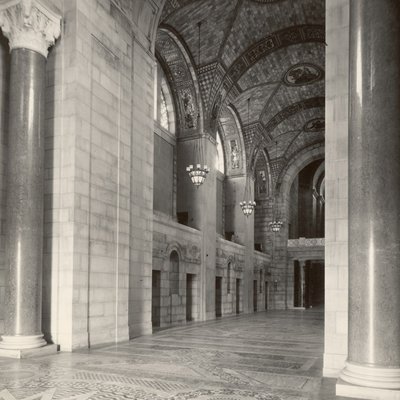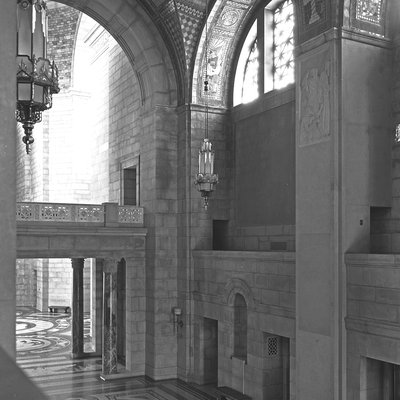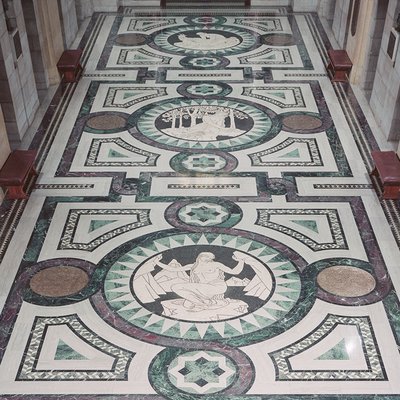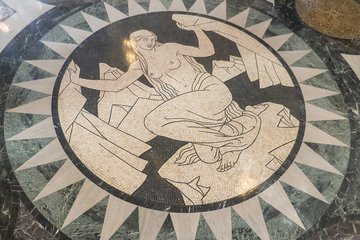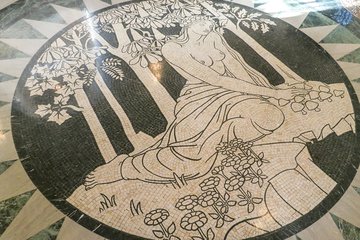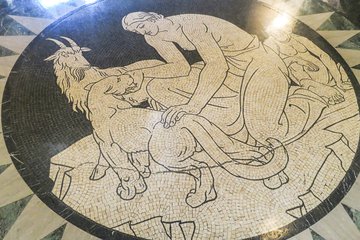CH 7
Foyer
Building Nebraska and Civil Responsibility
Take a Virtual Tour of the State Capitol. Click HERE to tour the Foyer of Nebraska's Beautiful Capitol.
The spaces for the murals in the foyer were in the Capitol's original
design, and the themes were selected at the time the Capitol was being
built in the 1920's. But the murals that filled those spaces were not
commissioned or created until the 1960's.
At that time, the
Capitol Commission decided they should be mosaics rather than paintings
or frescoes (murals painted on wet plaster). They believed mosaics made
of reflective glass would show better in the foyer's low level of
natural light.
They were right!
Unlike the mosaic murals (on the walls) -- which were commissioned later-- the mosaic floors in the foyer were done by hand at the time the Capitol was being built. Hildreth Meiere provided the design. Then a worker used a chart of the plan, a set of tools, and black and white marble to create the mosaic. Each piece was cut by hand and laid into the mosaic. The white marble is Italian and the black marble is Belgian. Meiere's ceiling mosaics were also done in the 1920's. These feature ceramic tiles in strong colors rather than marble or stone. Bertram Goodhue, the architect of the Capitol, liked Meiere's new ideas.
All the figures in the floor mosaics are based on the ancient Greek style of art. They used figures of people as symbols. They did not mean for them to be thought of as real people but the thing they symbolized. The three large circular medallions represent the earth: the Spirit of the Soil, the Spirit of Vegetation, and the Spirit of Animal Life.
